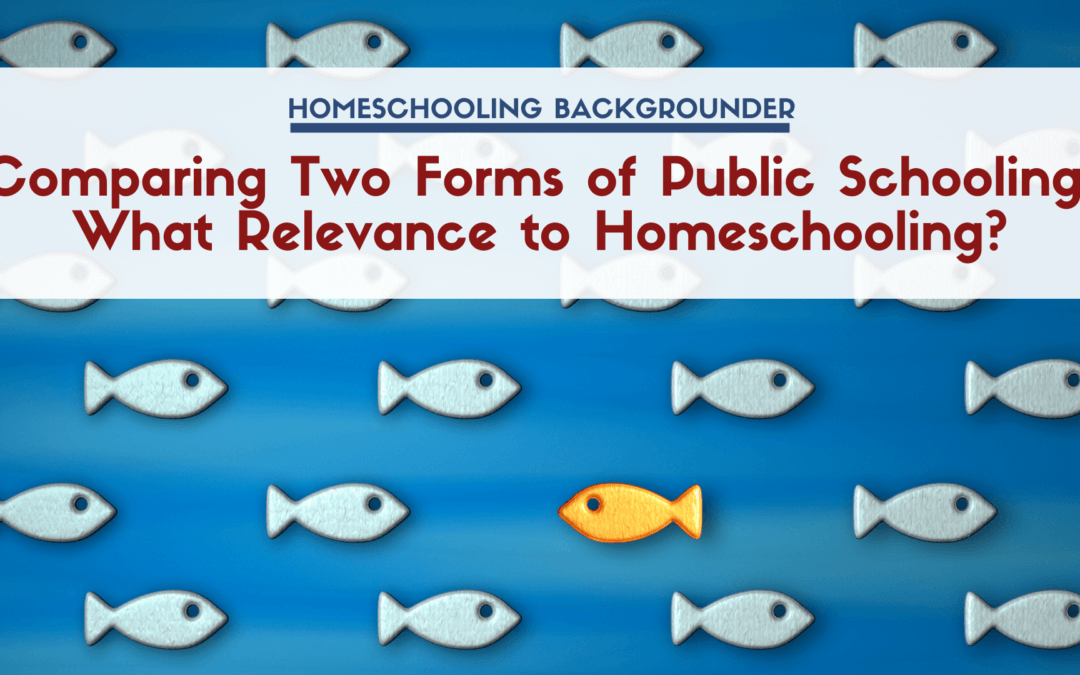Brian D. Ray, Ph.D.
September 9, 2020
Excerpt:
McCracken and Coleman have provided an engaging look at the relative academic success of two types of public school students in Alaska. One group is engaged in government-run correspondence schooling and the other is in conventional institutional schools. Their study will likely add to the research base and debate surrounding whether students in conventional public institutional schools or public distance, virtual, blended, online, or correspondence schools are better off academically (Miron, Shank, & Davidson, 2018; Vasquez & Serianni, 2017).
It is unusual and convoluted that the authors’ main empirical and analytical focus throughout the study was comparing the academic achievement of two types of public/government school students but stated that doing so is “… with the purpose of contributing to the literature on the academic outcomes of homeschooling” (p. 191).
In their discussion section, McCracken and Coleman spent considerable space comparing the findings of their study that compared the pass rates of government-controlled public correspondence school and government-controlled conventional school students to research findings on homeschooling. However, as the terms they use — “Alaska correspondence students,” “traditional school,” “correspondence education in Alaska,” and “correspondence programs like Alaska’s” — show, they did not study homeschool students as defined and considered by scholars, policymakers, lawmakers (including Alaska’s), and the general public for the past roughly 40 years (as explained at the beginning of this article).
This study expands our knowledge and understanding of government-run public correspondence and conventional schools. It tells us very little, however, about homeschooling. It is not clear why McCracken and Coleman tried so hard to lump government public correspondence school students in with homeschool students. Many Americans lump whitetail, mule, blacktail, Coues, and Sitka deer and elk, and moose together as big animals with antlers (on the males). Mammalogists, wildlife biologists, and hunters know, however, that there are many differences between these various ungulates in terms of habitat and their feeding, social, and mating behaviors. There are many sound reasons to not lump them together for purposes of management, taxonomy, scientific study, and hunting. It is something of a mystery why McCracken and Coleman confuse government-run, licensed-teacher managed, and tax-funded correspondence schooling with homeschooling.
Perhaps the strangest claim by McCracken and Coleman is the following at the very end of their article: “Despite these caveats, our findings have important implications for homeschooling policy” (p. 215). Since their study is clearly comparing the academic achievement (measured as pass rates) of government public correspondence school students to government public conventional schools students, their findings have no implications for policy related to homeschooling. Tax-funded, government-controlled public school programs such as “Alaska Statewide Correspondence Schools” are different in terms of law, conceptual construction, pedagogical practice, management, philosophy, and familial involvement than the vast majority of modern-day homeschooling. The authors are admittedly comparing the proverbial apples to oranges, with admitted major caveats and a non-experimental design, and then claiming that there is much to learn about homeschooling and much to apply to the government control (i.e., “policies”) of private education homeschooling.
In a final and peculiar twist, the authors implied that their study suggests a significant enough number of homeschool children are being harmed by homeschooling compared to those in government-run public schools that states and government school districts should analyze the data that they have in order to create “… homeschooling policies that protect children from negative academic outcomes” (p. 215-216). Since (a) McCracken and Coleman’s study is not about homeschooling, (b) their study, from the big-picture view, largely finds a slight academic advantage for public correspondence school students over public conventional school students, and (c) a majority of peer-reviewed studies to date have found that homeschool students perform academically better than institutional school students (Ray, 2017), it is unfitting for the authors to imply that their study shows that homeschool students are at any kind of risk that needs to be mitigated by government policy, law, or controls.
McCracken and Coleman’s study provides more knowledge and insight regarding the relative academic success of two types of public school students in Alaska. One group is enrolled in government-operated correspondence schools and the other is enrolled in government-operated conventional institutional schools. Their study will likely provide information from which public school policymakers and educators can learn.
On the other hand, there is nothing in McCracken and Coleman’s findings that tells us about the academic achievement of homeschool students as compared to those in government conventional institutional schools or in government-controlled correspondence schools. Further, no empirical evidence in their study informs government policy or controls regarding private parent-directed and home-based homeschooling education.
Source: https://www.nheri.org/comparing-two-forms-of-public-schooling-what-relevance-to-homeschooling/

